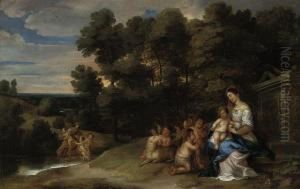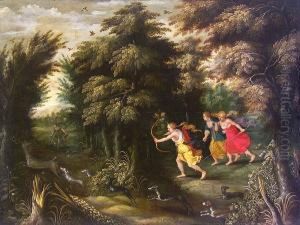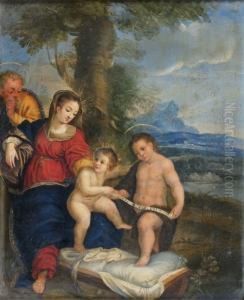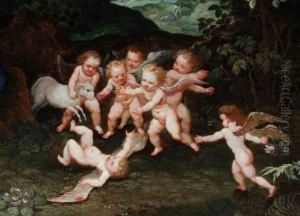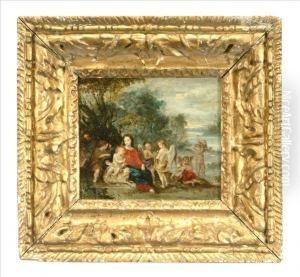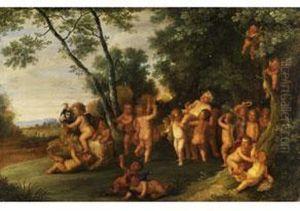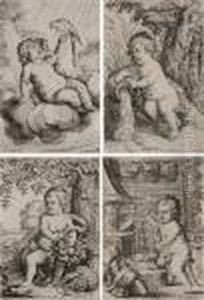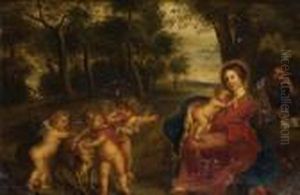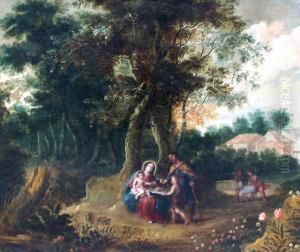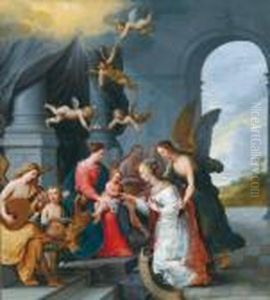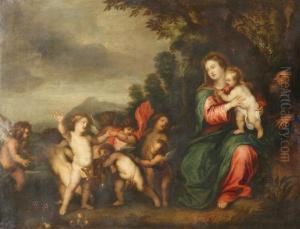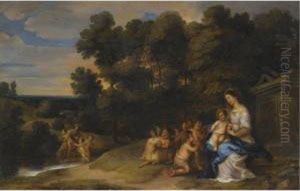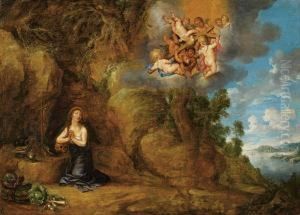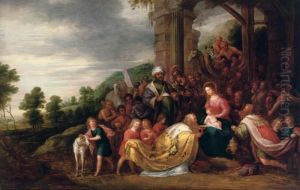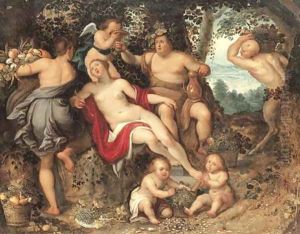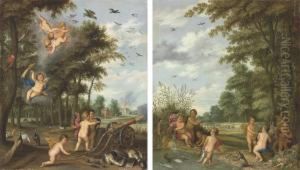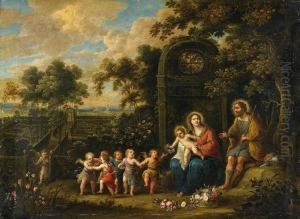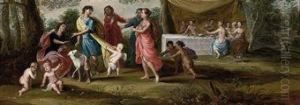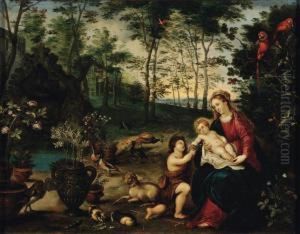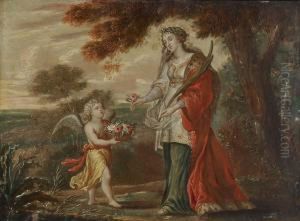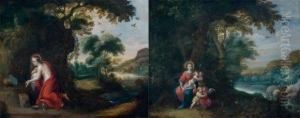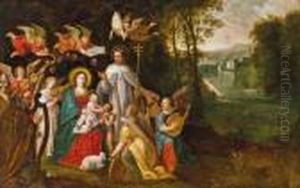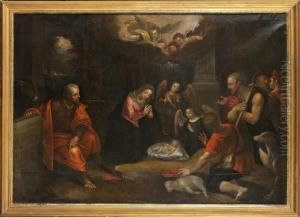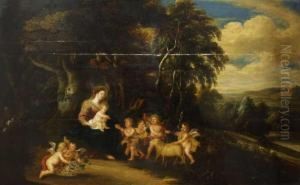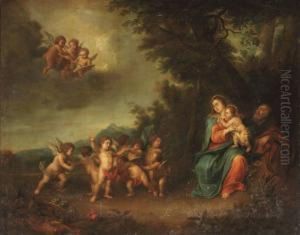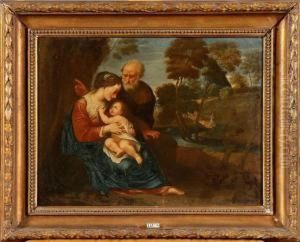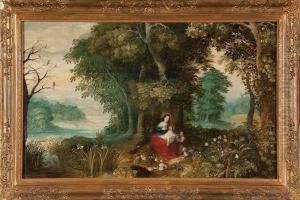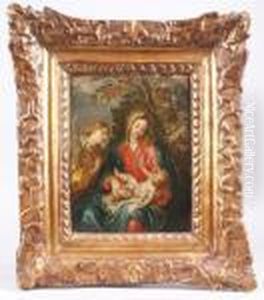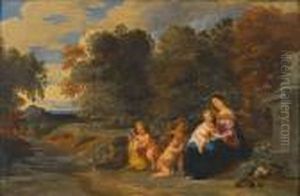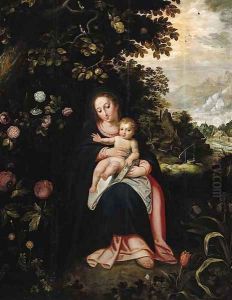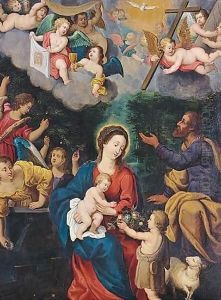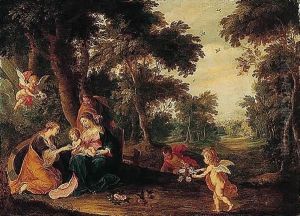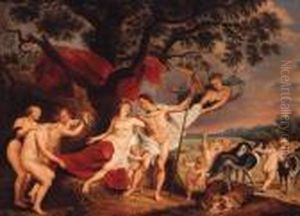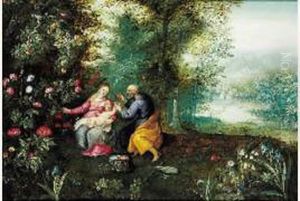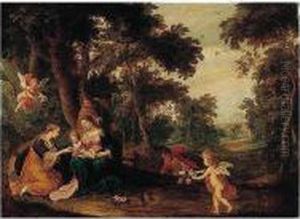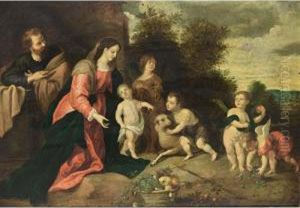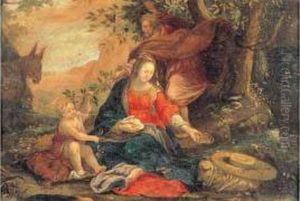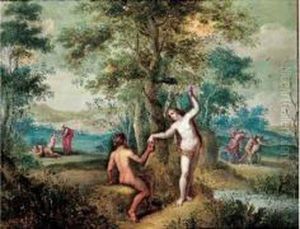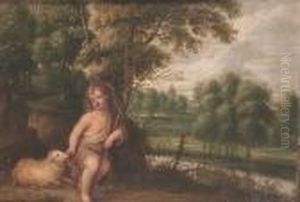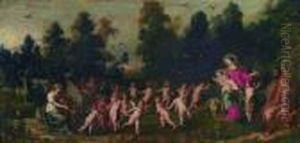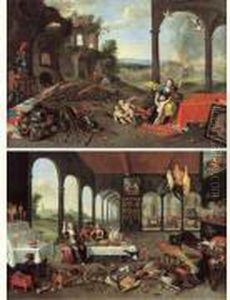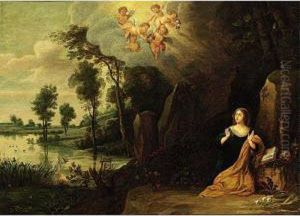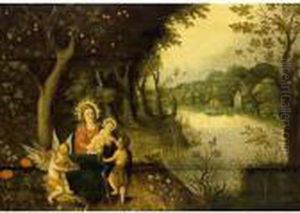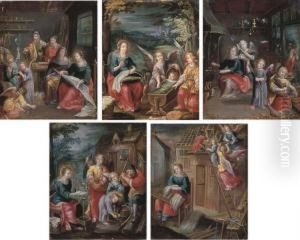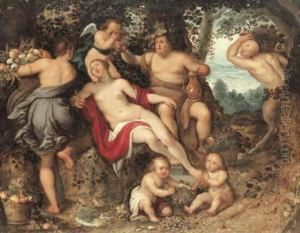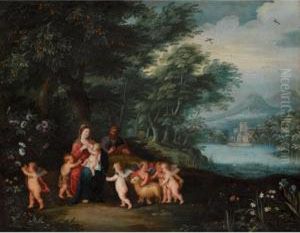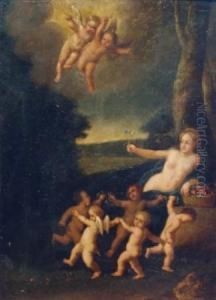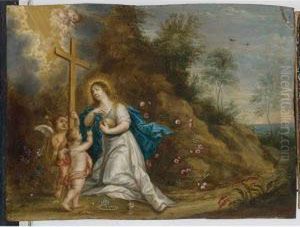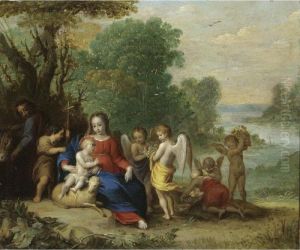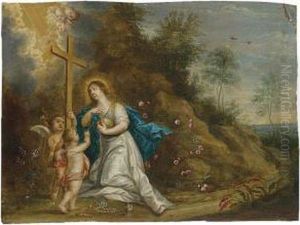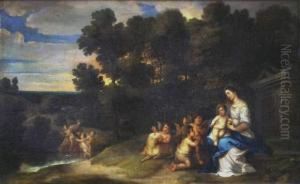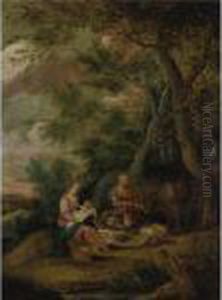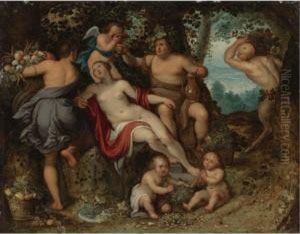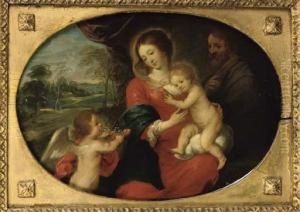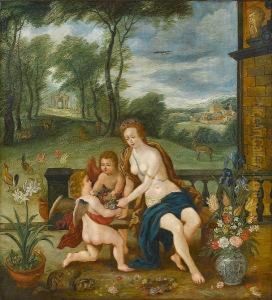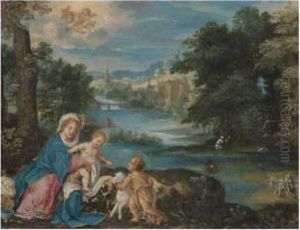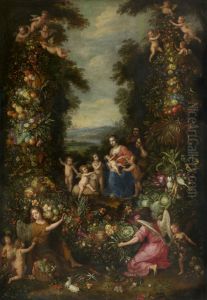Pieter Van Avont Paintings
Pieter Van Avont, a Flemish painter, engraver, and draughtsman, was born in Mechelen, the Southern Netherlands, in 1600. He is primarily known for his work depicting religious subjects, mythological themes, and children, as well as his collaborations with other artists.
Van Avont was a skilled painter who enjoyed portraying the innocence and tenderness of children, often including them in his representations of religious scenes. His style was influenced by the late Mannerist tradition, but he also incorporated elements from the emerging Baroque style, which was gaining popularity during his lifetime.
He became a master in the Guild of St. Luke in Antwerp in 1620 and worked in this city for most of his career. Van Avont collaborated with many prominent artists of his time, including David Teniers the Younger and Jan Brueghel the Younger. These collaborations were quite common in the 17th century as a way to meet the high demand for artworks. Van Avont often painted the figures, while the landscape or still life elements were completed by his colleagues.
In addition to his collaborations, Van Avont produced engravings and had a successful practice as an independent artist. His works were collected by art connoisseurs and patrons, which contributed to his reputation as a talented and versatile artist.
Throughout his career, Van Avont explored various religious themes, interpreting them with a sense of intimacy and emotion that resonated with the devoutly Catholic population of the Spanish Netherlands. He also depicted scenes from mythology, bringing to life the stories of gods and goddesses with a similar sense of warmth and detail.
Pieter Van Avont's death occurred in 1652 in Antwerp. His body of work continued to influence other artists and was appreciated by collectors well beyond his lifetime. Today, his paintings and engravings can be found in various museums and private collections, offering a glimpse into the rich artistic culture of the 17th century.
